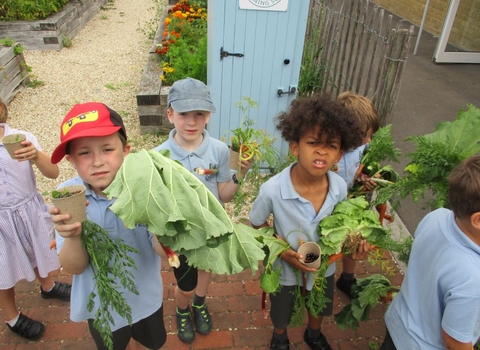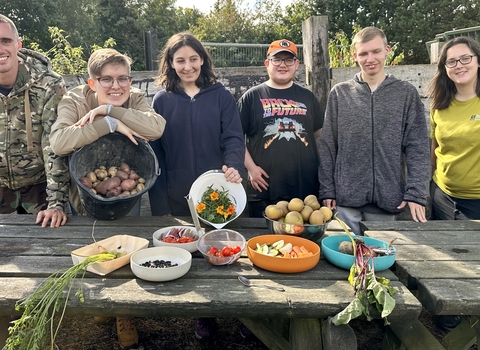Coronation Gardens for Food and Nature helps to support schools around the country with help and advice, helping children to get hands-on with growing their own food, and learning what to cook with the fruits of their labours.
Free resources for schools
We know it can be hard to get started, which is why we have created a downloadable pack of resources just for you!
We've been speaking to educators* to find out what the barriers are to setting up a garden for food growing in a wildlife-friendly way - and this is what we've been told:
-
40% of schools said they didn't have a garden, but would like to set one up
-
86% of all respondents said that lack of funds for seeds and plants was a barrier to participation
-
77% lacked tools and equipment
-
68% wanted more information in a digital form such as a downloadable pack (we’ve created this and will keep it updated with new tips and help).
*Survey of more than 15,000 schools
We've drawn on the experience of all four partners, and the views of schools and educators themselves, to create a bumper pack in English or Welsh that tells you:
- What to grow in term time
- What to grow if you don't have outside space
- What it could cost
- What to do with it
- How to get started
- How to go further
It's free and it's available now!
Schools are being encouraged to:
- Grow healthy food to eat – this could range from herbs and salads, through to vegetables and fruit trees depending on the space you have
- Plant pollinator-friendly blooms – butterflies, moths, bees and hoverflies all need sources of nectar and pollen to thrive. As they travel from flower to flower, they also pollinate them, enabling plants to set seed or bear fruit
- Create a water feature, which could be as simple as a submerged dish or as involved as digging a pond, lining it and oxygenating it using native plants such as hornwort
- Leave a patch of long grass or pile of logs to create shelter for wildlife and natural predators such as hedgehogs and frogs
- Go chemical and peat-free – avoid using pesticides, weedkillers and peat!

Copyright Edd Moore Damers First School 2023
Damers First School
Check out the incredible work that Damers First School in Dorset are doing. They take a fully holistic approach, with pupils growing, composting their food waste, cooking, and even selling at a local market.

Copyright Tamara Jewell, Sussex Wildlife Trust 2023
Tilgate Park Youth Rangers
Another great example is the Tilgate Park Youth Rangers - these 16-25 year olds in Sussex are sometimes referred to the group through local social prescribing. They learn new skills in practical nature conservation and wildlife gardening.
